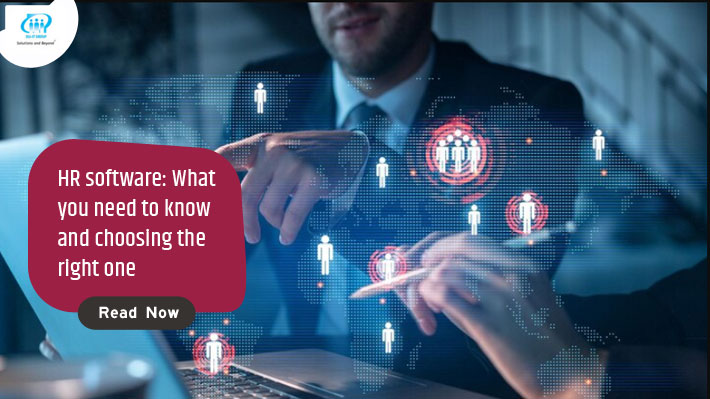In the fast-paced and ever-evolving world of human resources (HR), technology has become a crucial ally for managing various aspects of workforce management efficiently. HR software has emerged as a powerful tool to streamline processes, enhance employee engagement, and drive overall organizational success. Choosing the right HR software Dubai can be a daunting task, given the plethora of options available in the market. This article aims to provide a comprehensive guide on what you need to know about HR software and how to make an informed decision that aligns with your organization’s unique needs.
Understanding HR Software
HR software, also known as Human Resource Management Systems (HRMS) or Human Capital Management (HCM) software, is designed to automate and centralize HR processes. These processes include recruitment, onboarding, performance management, payroll, time and attendance tracking, benefits administration, and more. The software aims to improve efficiency, reduce manual errors, and enhance the overall HR function’s effectiveness.
HR Software Basics:
Human Resources (HR) software, also known as Human Capital Management (HCM) software, is designed to streamline and automate HR processes within an organization. These systems help HR professionals manage various aspects of employee information, payroll, benefits, recruitment, performance management, and more. Here are some basic features and functionalities commonly found in HR software:
Employee Information Management:
Centralized employee database: Store and manage essential employee information such as personal details, contact information, employment history, and skills.
Recruitment and Applicant Tracking:
Job posting: Create and publish job openings on various platforms.
Applicant tracking: Manage the recruitment process from application to hiring, including resume parsing, interview scheduling, and candidate communication.
Time and Attendance Management:
Time tracking: Record and monitor employee work hours.
Attendance management: Track attendance, leave requests, and time-off balances.
Payroll Processing:
Salary calculation: Automate payroll calculations based on time and attendance data.
Tax calculations: Manage tax deductions and withholdings.
Direct deposit: Facilitate electronic salary transfers to employees’ bank accounts.
Benefits Administration:
Benefits tracking: Manage employee benefits such as health insurance, retirement plans, and other perks.
Open enrollment: Facilitate the process of employees selecting and enrolling in benefits.
Performance Management:
Goal setting: Establish and track individual and team goals.
Performance reviews: Schedule and conduct employee performance evaluations.
Learning and Development:
Training management: Track employee training and development activities.
Learning modules: Provide online courses and materials for employee skill enhancement.
Employee Self-Service (ESS):
Employee portal: Allow employees to access and update their own information, view pay stubs, request time off, and more.
Analytics and Reporting:
Generate reports: Create custom reports on HR metrics, workforce analytics, and other relevant data.
Data visualization: Present HR data in easy-to-understand charts and graphs.
Compliance and Legal Compliance:
Ensure adherence to GCC Labor laws and regulations
Generate reports to demonstrate compliance.
Integration with Other Systems:
We have case studies on integration with major ERPs like Microsoft Dynamics 365, SAP, Oracle and many more
Mobile Accessibility:
Provide mobile apps or responsive interfaces for access on smartphones and tablets.
When selecting HR software, organizations should consider their specific needs, the size of their workforce, and the scalability of the software to accommodate future growth. Additionally, user-friendly interfaces, security features, and customer support are important factors to consider.
Key Features to Consider
When evaluating HR software, it’s essential to consider a range of features that align with your organization’s specific requirements. Key features include:
Performance Management: Set goals, conduct performance reviews, and track employee progress.
Learning Management System (LMS): Provide training and development opportunities to enhance employee skills and knowledge.
Employee Self-Service (ESS): Empower employees to manage personal information, leave requests, and other HR-related tasks.
Time and Attendance Tracking: Monitor employee attendance, manage work hours, and streamline payroll processes.
Payroll Processing: Automate payroll calculations, tax deductions, and compliance to ensure accuracy and regulatory adherence.
Benefits Administration: Simplify benefits enrollment, manage employee benefits, and ensure compliance with regulations.
Factors Influencing Decision-Making
Several factors should be considered when choosing HR software:
Scalability: Ensure that the software can grow with your organization and accommodate an expanding workforce.
Integration: Choose a solution that seamlessly integrates with existing systems, such as accounting or ERP software.
User-Friendly Interface: A user-friendly interface promotes adoption and reduces the learning curve for both HR professionals and employees.
Compliance: Ensure that the software complies with relevant labor laws and industry regulations.
Vendor Support and Reputation: Evaluate the vendor’s reputation, customer reviews, and the level of support provided.
Making the Right Decision
To make an informed decision, conduct a thorough needs analysis, involve key stakeholders in the decision-making process, and leverage trial periods or demonstrations offered by vendors. Consider seeking input from HR professionals, IT experts, and end-users to understand the software’s usability and functionality. Additionally, take advantage of customer references and case studies to gauge real-world experiences with the software.
Conclusion
In the rapidly evolving HR landscape, choosing the right software is critical for organizational success. By understanding the key features, evaluating influencing factors, and involving stakeholders in the decision-making process, businesses can select an HR software solution that aligns with their unique needs and goals.
